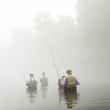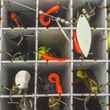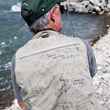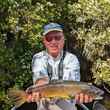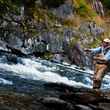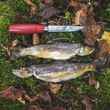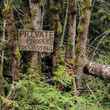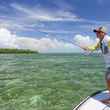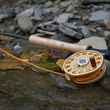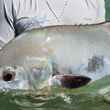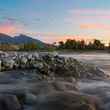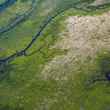Spring can be cruel. After a long winter of desperation our need to wander in the water can be foiled by her swollen clouds clinging to hillsides dispensing valley filling deluges. We complain about this bounty of water but if she shirks her role we'll be bitching come August. Always the trade offs.
Saturday night rain pounded on the skylight telegraphing the state of rivers come morning. Sure enough, the gage reported Sunday's river at twice normal size and it looked to be getting bigger. The Sunday sky, clear at dawn, by noon was spitting a preamble to the showers we'll see all week.
I'm six days off the operating table; a tune-up on a knee that's given me trouble for decades. It's one of those injuries that they want you walking on immediately after surgery and turning the exercise bike come evening. I've been doing my part and it seems to be healing quickly. It'll take weight and aside from some tenderness near the sutures and an annoying habit of bending in the wrong direction at the wrong times, I'm pretty happy with my progress.



